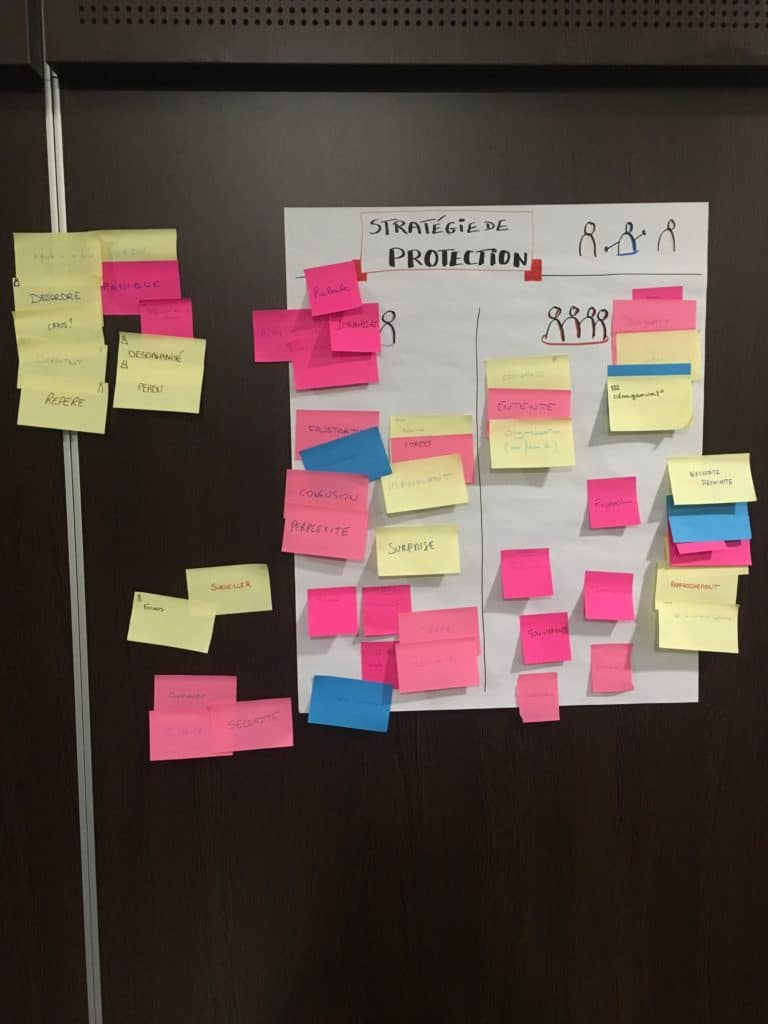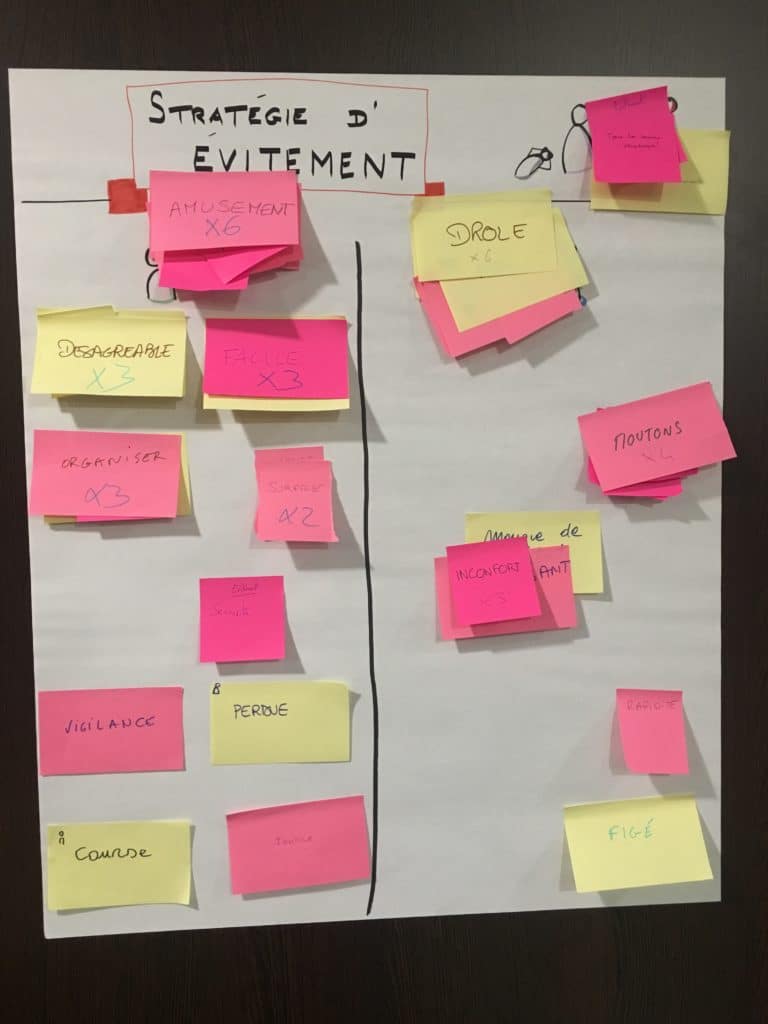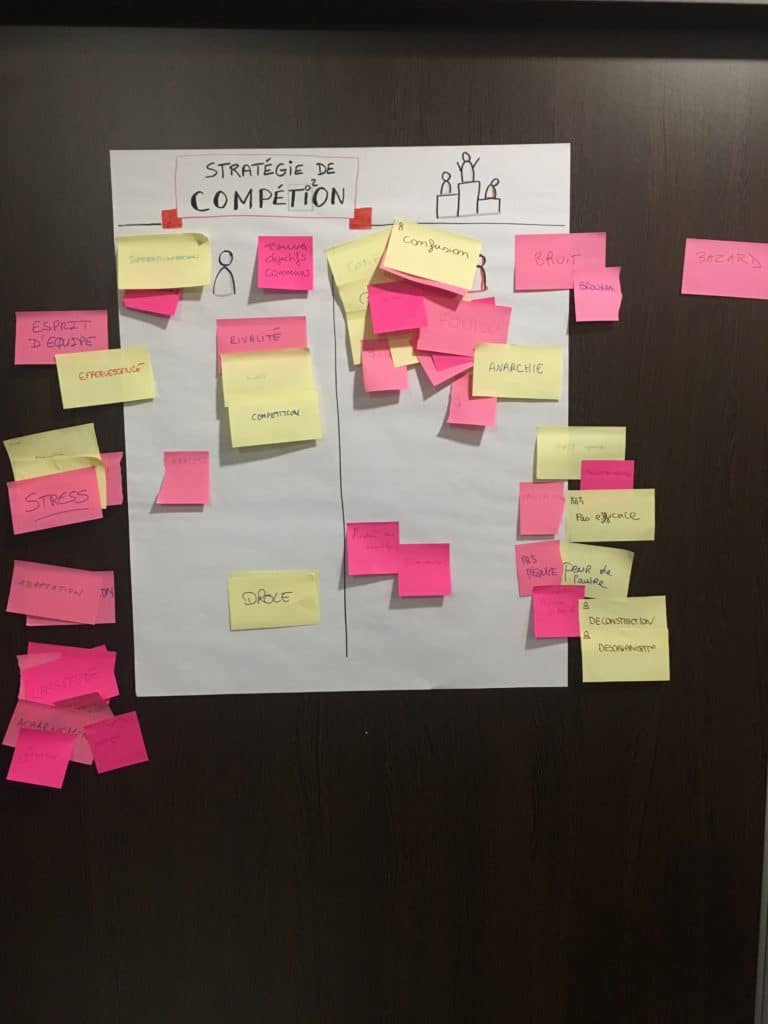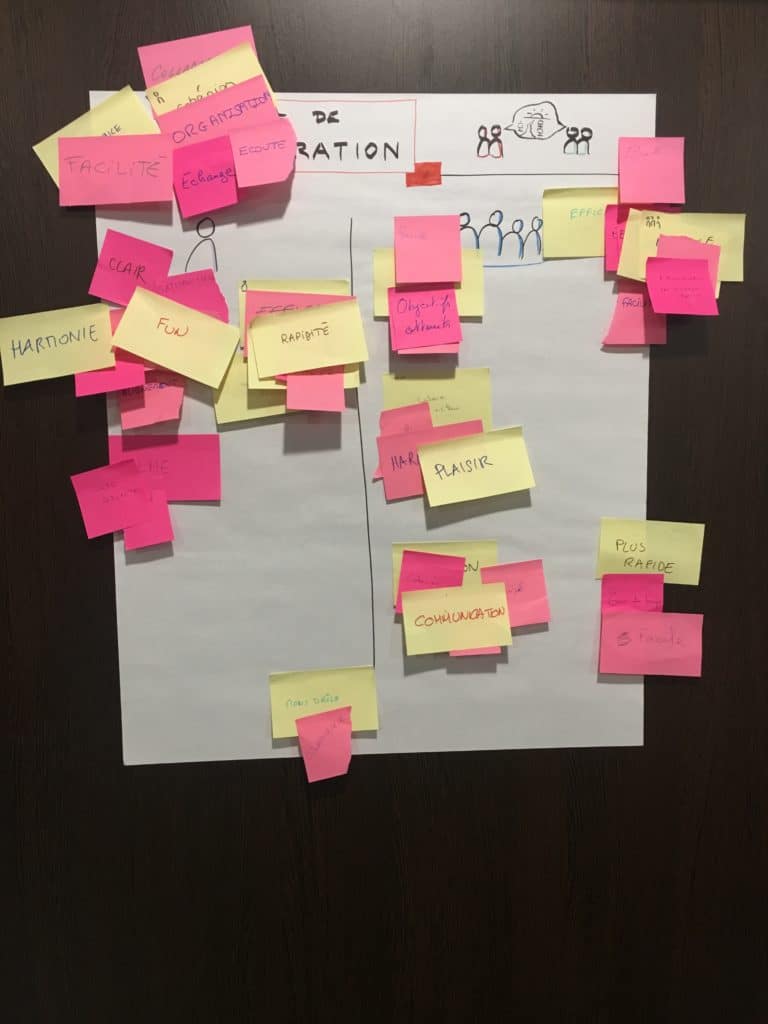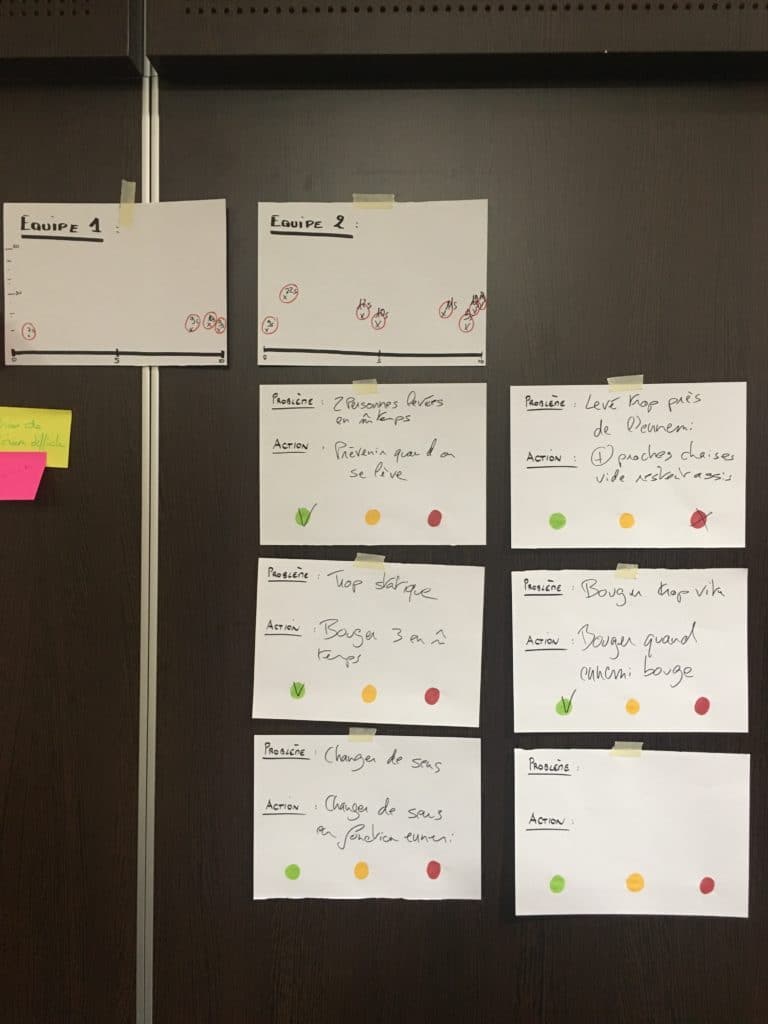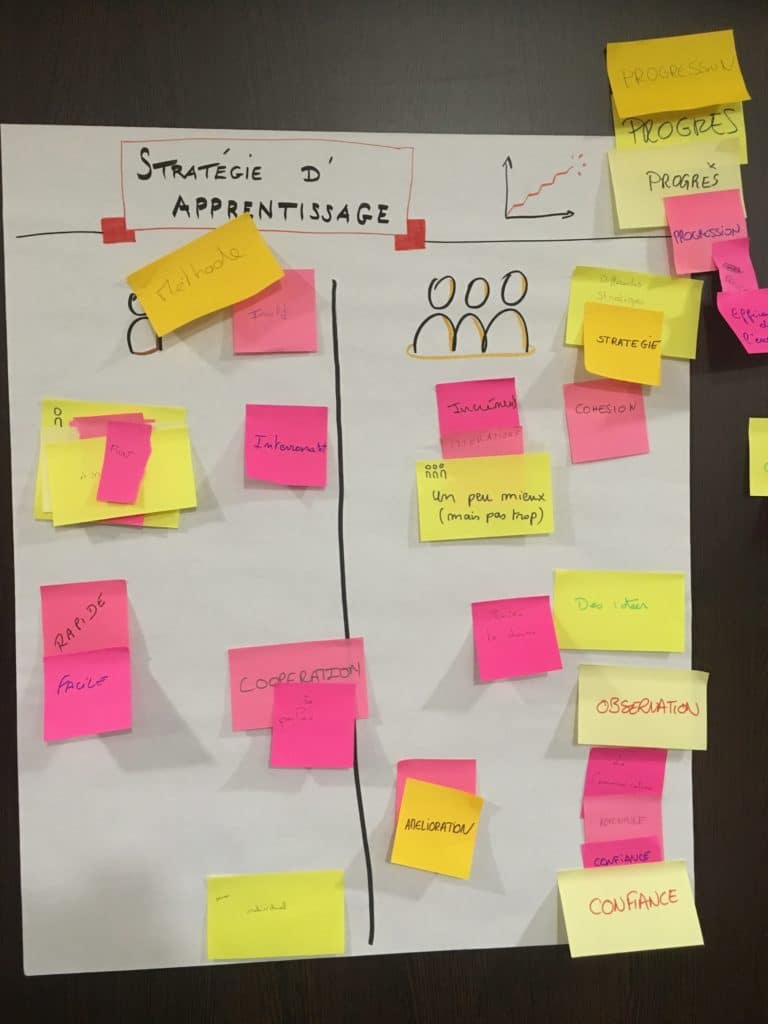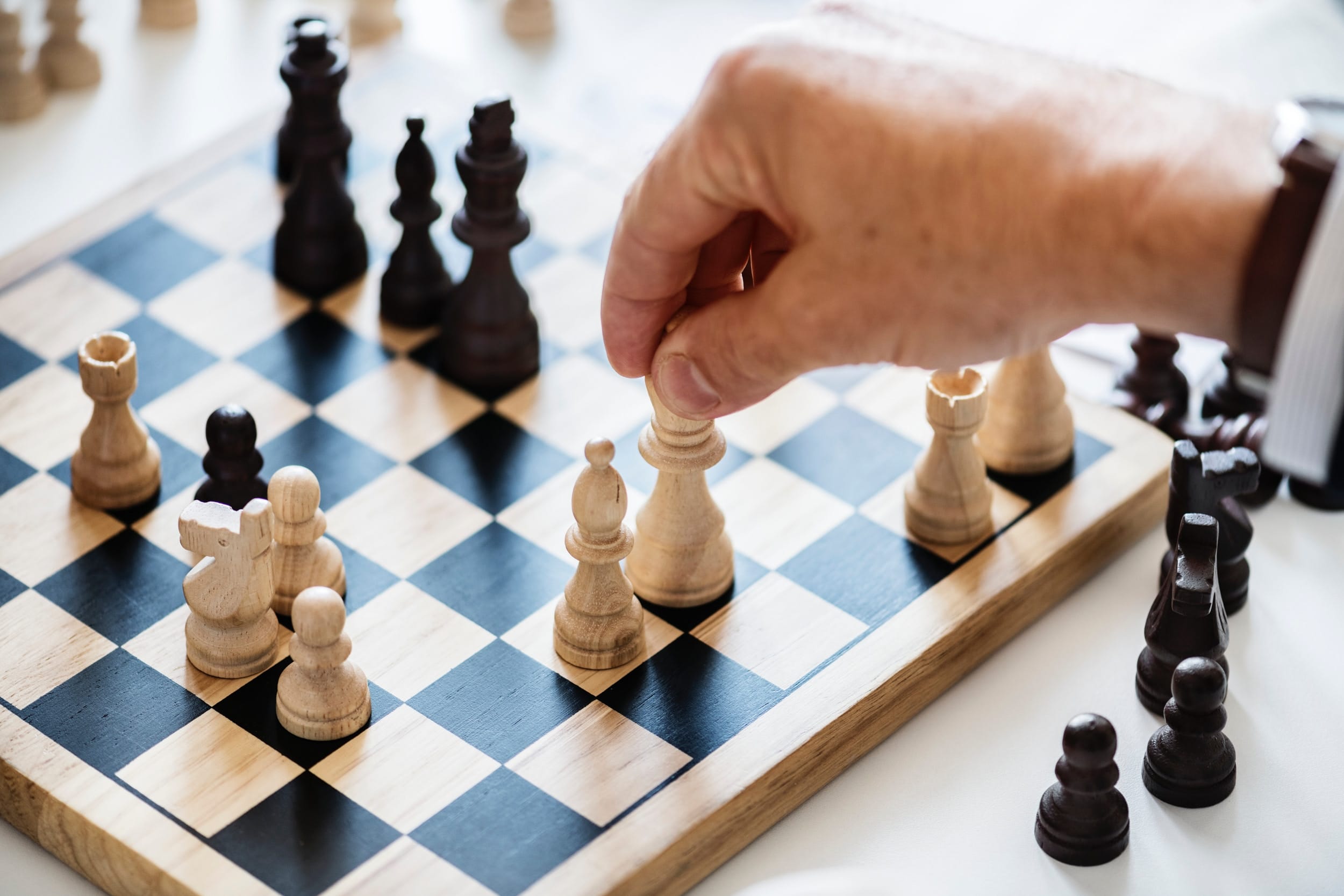
Photo by rawpixel on Unsplash
As would say Karl Scotland, Agility can be seen as a strategy : such a “ship in a storm always going in the right direction”. This image spoke to me a lot and that's what made me want to build a workshop around the subject by adding the impact on the dynamics of a team.
I had the chance to experience it this year at theAgile Tour Aix Marseille 2018 in the company of Caroline Aupert.
Here are the details in this article with the process and results obtained! 😉
Workshop concept

Here are some criteria behind the choice of games:
- Limited hardware : given the displacement and I admit, a personal preference
- Short times : each workshop had to not be too long to be able to be chained in the 1h30 which were allocated to us
- Relevance : to be able to expose different strategies, main theme of the workshop
In order to be able to take a step back from the different strategies, I made the choice to expose them by comparison 2 to 2 at first then to debrief them individually in a second time. This does not mean that one is necessarily good and the other bad, but potentially that one is more suitable than the other at a given moment.
With regard to the Debriefing – an important phase of any workshop of this type – the idea was to allow each participant to take a step back from each experienced situation. To do this, we suggest that they express one or more words at the end of each simulation about what they have experienced. individually and collectively. These results will allow us to discuss the impacts of strategy on team dynamics.
| Note: this debriefing was therefore voluntarily emergent, we did not know in advance what was going to be recorded by the participants. The objective was above all to start from what they had experienced to generate exchanges rather than to impose our prism on this subject. |
Thus, the big winners for this cocktail of workshops were:
- Movers and Shapers (which will be the subject of a future article): to compare the strategies of Protection and D'Avoidance
- The Game of Chairs (which will be the subject of a future article): to compare the strategies of Competition and of Cooperation
- Non-Musical Chairs : to compare the strategies of Performance and D'Learning
Protection vs Avoidance
For this first part, we started with Movers and Shapers, one of my favorite workshops of the moment.
Indeed, its concept is simple: the whole group will have to follow a series of instructions (officially 3) in silence until we tell them to stop. We decided to make only 2 in order to serve our purpose.
| Note: The point of putting this workshop first was a way to get the group started and for us as facilitators to start with light facilitation. |
Protection Strategy
In this first round, we first ask the whole group to spread out in space and then follow the following instruction:
Choose 2 people from this group and form a line with them as if protecting one from the other.
In other words, put yourself between these 2 people with one in front of you and the other behind you.
Note: Those selected do not need to know this.
Protection strategy with@cau_karo #atam18 pic.twitter.com/3FMWO21HIs
— Olivier MY (@OyoMy) December 13, 2018
What's happening
- The group tends to compact.
- People who find themselves outside the group are desperately looking for a way to fit in between other people.
We repeat the experience once or twice more and we invite the participants to go and deposit their individual and collective impressions on the corresponding poster.
Debriefing elements
- The more we protect each other, the more the bonds intensify. It is also in adversity that we strengthen the unity of the group all the more.
- Too much protection can lead to suffocation: one can think of the so-called “open source” movements which go in the opposite direction.
Results at the end of the workshop
Avoidance Strategy
In this second round, we again ask the whole group to spread out in space and then follow the following instruction:
Choose 2 people in this group and hide from one behind the other.
Note: Those selected do not need to know this.
Avoidance strategy with @cau_karo #atam18 @SoatGroup pic.twitter.com/0CCQ8zBhuC
— Olivier MY (@OyoMy) December 6, 2018
What's happening
|
Debriefing Elements
We can see on the photo that the group ends up forming a line, as if there were 2 opposing camps.
One way to take a step back from this situation would be to say that by dint of avoiding your problems and not facing them, you end up delegating the decision-making to a third authority. In business, we can see it in the de-responsibilization of employees in their work and who expect their hierarchy to make decisions for them.
Note: We will however agree that within the framework of the exercise, this situation should not freeze in this way if everyone followed the instructions to the end! Isn't the observation nonetheless interesting? 😉
Results at the end of the workshop
Competition vs Cooperation
We change register to highlight this second couple of strategy by the game of chairs.
In this workshop, participants will be split into 3 groups, each with a specific objective to fulfill.
Let's see how it goes! 😉
Competition Strategy
Before launching the participants in the activity, we invite them to:
- Gather a set of chairs in the center of the room (in a pile, no set order)
- Form 3 equally divided groups
- elect a representative
We prepared in advance 3 sheets (A, B and C) on which were written the following instructions:
- A: All chairs in CIRCLE
- B: All chairs Upside down
- C: All chairs BACK TO BACK
We then ask the 3 representatives to come together and then we set out the following instructions:
- Everyone will receive an objective for their team to complete
- They will have 15 seconds to organize themselves within their team
- When launching the activity, the objective must be completed in 1 minute, in silence.
Competition strategy with @OyoMy #Atam18 @SoatGroup pic.twitter.com/q03MfufUV7
— Caroline Aupert (@cau_karo) December 6, 2018
What's happening
- Each group tends to throw itself body and soul into the accomplishment of its objective.
- After a while, people will collect chairs previously arranged by a group to arrange them as they wish.
- Some will rather pick them up on the sly to bring them home.
- Others will sometimes come into conflict by trying to snatch a chair from the hands of another person.
As animators, we quietly observe the unfolding of the scene and we stop when the first “conflicts” arise. Keep in mind that this is just a game! 😛
Debriefing elements
- We naturally put ourselves in a competitive position when nothing indicated it
- We can make the connection with the notion of "resources" that the entities of the same company can tend to "tear off" to carry out their projects.
- There's a mad energy going into doing/undoing/redoing things
Results at the end of the workshop
Cooperation Strategy
To talk about cooperation, we simply invite participants to share their different objectives openly to the group. After realizing that these were not incompatible, we invite them to implement them again knowingly.
Cooperation strategy with @OyoMy #Atam18 @SoatGroup pic.twitter.com/ZZPvFulJ2W
— Caroline Aupert (@cau_karo) December 6, 2018
What's happening
- The whole group is peaceful in accomplishing their goals
- There is even mutual aid between people who do not belong to the same group
- The overall challenge is completed much faster
Debriefing elements
- Transparency is one of the fundamental elements to enable relevant decision-making by all stakeholders. This is one of the reasons why we often start with Visual Management in order to allow teams to " See together For To learn together and so Act together" .
- Cooperation allows a reduction in friction and conflicting arbitration committees: the group has an overview of what needs to be done.
- In our framework, the objectives were coherent enough to be all done in a complementary way. When this is not the case, cooperation can precisely highlight these inconsistencies in order to redefine more relevant objectives.
Results at the end of the workshop
Performance vs Learning
To highlight these 2 new strategies, I decided to go to one of the workshops that I particularly like: the non-musical chairs. Indeed, it is a workshop that is both fun, engaging and full of learning in terms of team dynamics. On top of that, even though patterns emerge, every group experience is different! 😉
However, an observation that I have been able to make on many occasions is that most teams try to immediately have THE right strategy to meet the challenge. The main problem is that she tends to reinvent the wheel and lacks the ability to learn from her previous experience in a structured way.
For this part, we decided to split the group into 2 in order to be able to:
- give everyone a more relevant experience
- allow additional richness in the diversity of strategies implemented
Performance Strategy
We invited the participants to arrange a number of chairs equivalent to the number of participants + 1 chair randomly in the space.
Then we gave them the following instructions:
- Your goal as a team is to keep the host from sitting in the empty chair for as long as possible.
- Every time you take your butt off your chair, you have to sit down on another chair
- No possible contact with the animator, no blocking or any hindrance to movement
- The chairs are also not movable – we do not touch the basic structure
At each round, the team will have the opportunity to take a moment to reflect on its strategy to best respond to the problems encountered.
We explain that this challenge will last 10 minutes in total and that we will keep the best time.
We then launch the experiment.
What's happening
- The first round ends in less than 5 seconds and begins the first retrospective phase
- Many oral exchanges on the right strategy to adopt
- 3/4 of the time is spent discussing and theorizing
- Sometimes people test their strategy with each other but don't check it with the facilitator
As facilitators, we observe the debates in progress and we wait for the team to come back to us to restart a round: a wait that will last… a while! 😛
In my case, it was after about 7 minutes that a new attempt took place!
Debriefing elements
- We automatically look for THE RIGHT SOLUTION to adopt: we can think here of the notion of competition which resonates again
- We like to debate and theorize but it's when we face the field that we get the real answers
- The attempts implemented by the team are of the order of quits or double: do you do your projects in the same way? 😛
| Note: we can remember that the group is a living system and not mechanical, and that the challenge is also faced with a living system. Moreover, the participants do not really know each other at the start of the workshop. The situation is therefore Complex and not complicated ! |
Results at the end of the workshop
Learning Strategy
In this second part, we asked participants to reshuffle the cards by forming 2 new groups. Indeed, even if the activity is known, changing the members of the team seemed to us like a sufficient reset to be able to start the experiment again.
The rules remain the same at the activity level. However, we announce to the participants that we will be more directive during this round: the idea is mainly to help them structure their learning and to avoid going back to the automatisms of looking for the best solution the first time by encouraging them to take action.
We present them with a basic experiment sheet with the following information:
- Issue : what do we want to answer? What went wrong?
- Shares : to answer this, what do we actually do?
- Indicators : Green (OK), Orange (Again), Red (KO)
This sheet will have to be filled in at each experiment in order to notch their learning as they go along: this is where we will have a big role to play as facilitators! 😉
We then restart the workshop.
What's happening
- The first round ends almost as quickly as before and begins the first retrospective phase
- There are many more experiments implemented in the 10 minutes
- Strategies that seem to work are adopted and potentially amplified
- Strategies that appear to be too complicated or not working are dropped
- Participants end up playing the card of simplicity and communicating more frequently during the tour
- However, it is always important for the facilitator to cut off discussions that are too long to focus on learning and the next experiment.
Debriefing elements
- Learning is not an easy activity to implement despite the continuous improvement injunction that Agility brings with it
- Accepting failure in the short term to learn and succeed in the long term is far from natural in our frame of reference and our way of thinking about things.
- Learning deserves great discipline in order to be able to truly notch and see the impact of new practices on the final result
Results at the end of the workshop
Debriefing
We carried out a General Debriefing with the whole group. A little like during the animation of a 4L retrospective, we asked the participants to distribute themselves around the different posters and to group similar ideas together in order to be able to make a more structured restitution to the rest of the group afterwards.
Debriefing in progress #atam18 @cau_karo @SoatGroup pic.twitter.com/JqfHiZYkHr
— Olivier MY (@OyoMy) December 6, 2018
Conclusion

The workshop seems to have been rather well appreciated by the participants. The diversity of activities, the movement and the interaction of the participants are probably the great strengths.
A few acknowledgments are needed to end this article:
- Thank you to the organization of the Agile Tour Aix Marseille for their trust and for allowing us to experience this workshop!
- Thank you to the participants for their good mood, their energy and their commitment to this experiment which seems to me today to be rather satisfying!
- And of course, thanks to carolina for brilliantly co-facilitating this workshop with me! 😉
With that, I wish you happy holidays! 🙂

